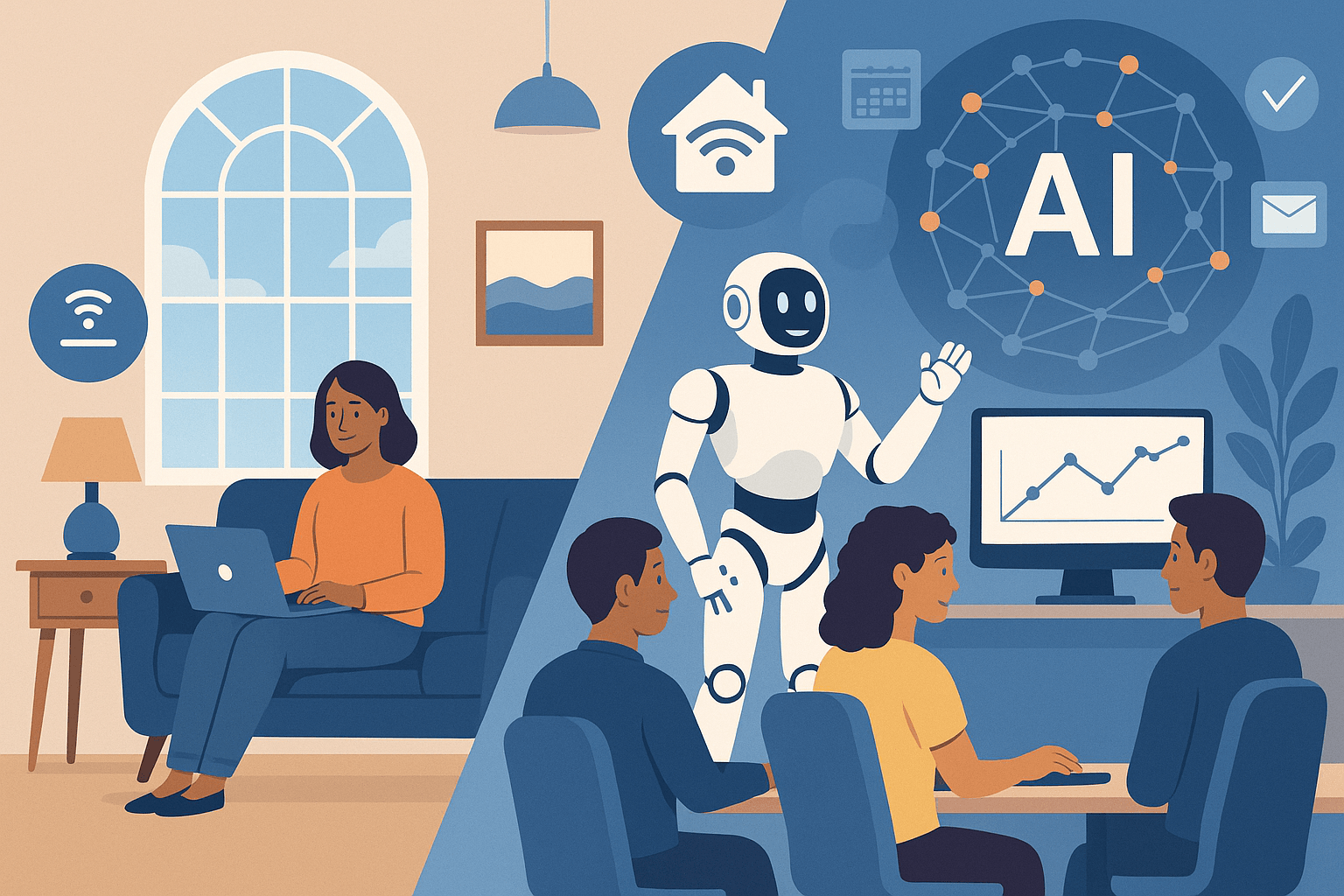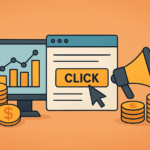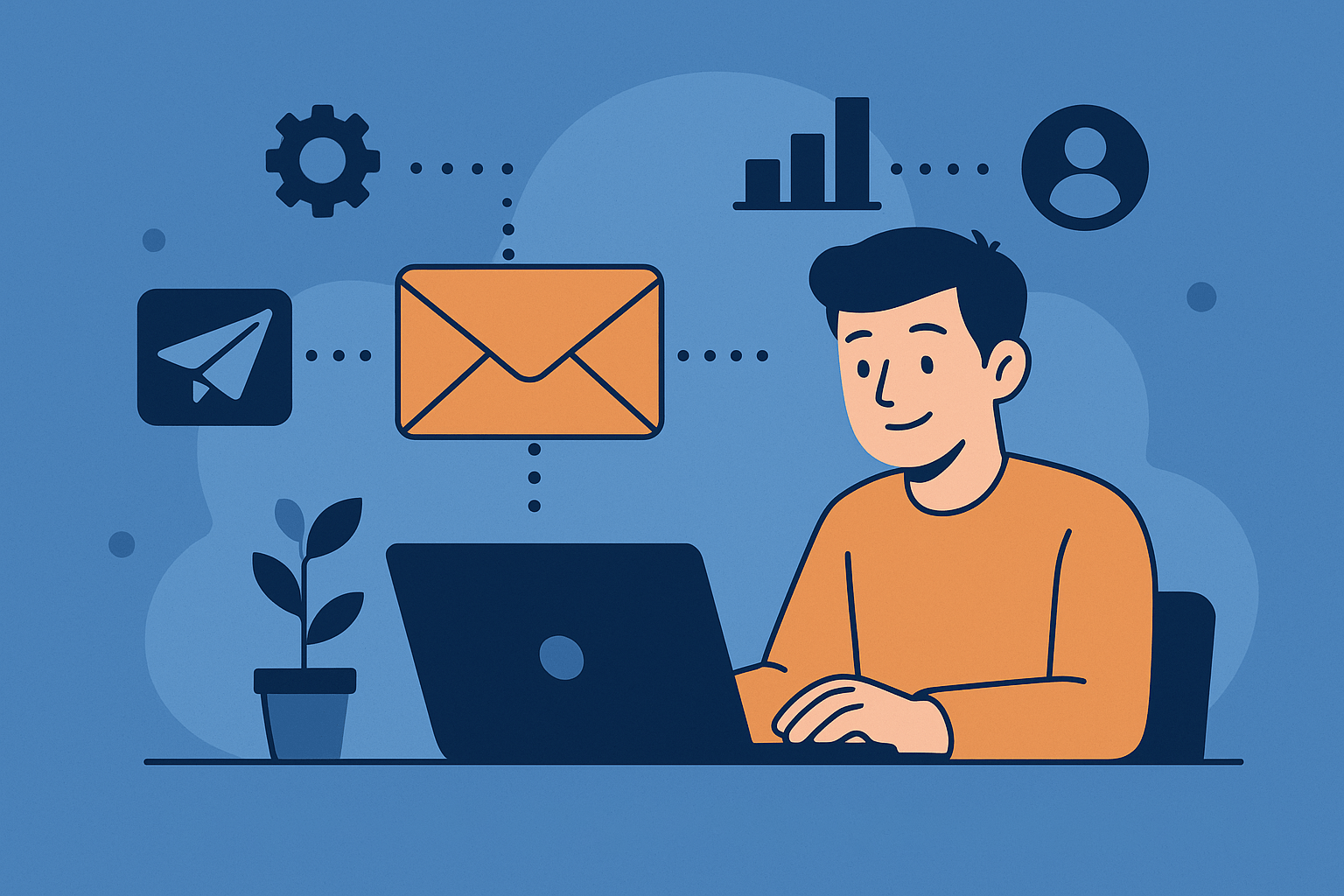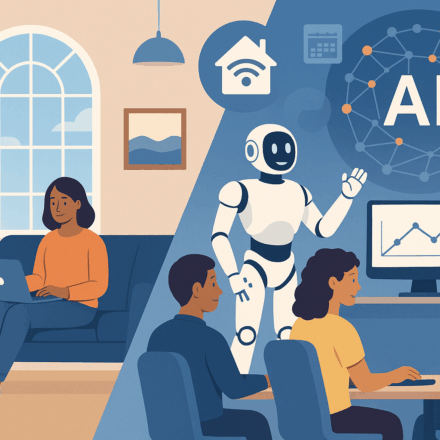How AI Is Changing Everyday Life: From Smart Homes to Workspaces
Table of Contents
- Smart Homes: Everyday Intelligence
- Voice Assistants
- Home Automation and Security
- Facial Recognition
- Motion Sensors with Smart Detection
- Predictive Analytics
- Energy Efficiency
- Workspaces: AI Boosting Productivity
- AI-Powered Collaboration
- Recruitment and HR
- Automation and Repetitive Tasks
- Real-world example
- Healthcare, Education, and Retail
- Healthcare
- Education
- Retail
- AI and Ethical Considerations
- What the Future Looks Like
- Conclusion
- Learn the Basics of AI
- External Resource
Artificial Intelligence (AI) has quietly become part of our everyday routines. From setting reminders with voice assistants to optimizing how we work, AI is no longer reserved for science fiction or big tech companies—it’s here, in your living room and your office.
This article explores how AI is transforming everyday life, focusing on its impact on smart homes, workplaces, and beyond. Whether you’re an early adopter or just AI-curious, you’ll get a clearer picture of what this technology is really doing—and what’s coming next.
Smart Homes: Everyday Intelligence
AI in smart homes goes beyond convenience—it’s about creating intelligent environments that learn and adapt to you.
Voice Assistants
Smart speakers like Amazon Echo or Google Nest have become staples. They can:
- Control lights and thermostats
- Schedule alarms and routines
- Answer questions in real-time
- Order groceries or products online
These devices use natural language processing (NLP), a field of AI that helps machines understand human language. Natural Language Processing (NLP) is a subfield of artificial intelligence focused on enabling computers to read, interpret, and respond to human language in a meaningful way. It combines linguistics, machine learning, and deep learning to process both spoken and written language.
In smart home devices, NLP powers functionalities such as:
- Speech recognition: Converting spoken words into text so the device can understand commands (e.g., “Turn off the lights”).
- Intent detection: Interpreting what the user means, not just what they said (e.g., distinguishing “set an alarm” from “what time is it?”).
- Context awareness: Maintaining conversational flow by remembering prior commands or inferring meaning from incomplete input (e.g., “play the same song again”).
Advanced NLP systems continue to learn and improve over time, enabling more natural and human-like interactions. This is why voice assistants today can handle multi-step queries or even respond to jokes and casual conversation—something that wasn’t possible just a few years ago.
Home Automation and Security
AI-enabled systems like Ring or Nest Secure now monitor your home using facial recognition, motion sensors, and even predictive analytics. They can differentiate between a known visitor and a stranger or alert you if unusual activity is detected. AI-powered home security systems go beyond traditional motion detection by incorporating multiple layers of smart technology:
Facial Recognition
Devices such as the Nest Doorbell with camera or Ring Video Doorbell Pro can recognize faces and assign names to frequent visitors. Using AI-based facial recognition, the system learns over time who regularly visits your home—such as family members, neighbors, or delivery personnel—and labels them as “familiar.” When a new or unknown face appears, the system can immediately notify you or trigger an alert.
Motion Sensors with Smart Detection
Instead of alerting users for every movement, modern AI-integrated motion sensors analyze the type, size, and pattern of movement. This means they can differentiate between:
- A car passing by vs. someone approaching your door
- A pet walking in the yard vs. a person lingering near the window
This reduces false alarms and makes alerts more relevant and actionable.
Predictive Analytics
These systems use historical data and behavioral patterns to anticipate potential security risks. For example, if your security camera usually sees the same activity at certain times, and a sudden unexpected event occurs—like someone lurking near the entrance late at night—it can flag this as unusual. Some systems even integrate with police or neighborhood alert databases to assess local threats.
By combining real-time AI analysis, user-defined rules, and cloud-based learning, these home security solutions offer a proactive approach—alerting homeowners before something becomes a threat, not just after it happens.
Energy Efficiency
Smart thermostats like Ecobee or Google Nest use AI to learn your schedule and adjust heating or cooling automatically—saving energy and lowering bills.
Fun Fact: According to a 2024 report by Statista, the global smart home market is projected to reach $230 billion by 2028, driven heavily by AI adoption.
Workspaces: AI Boosting Productivity
The workplace has changed drastically with the rise of AI—especially post-pandemic, where remote and hybrid models became the norm.
AI-Powered Collaboration
Tools like Notion AI or Microsoft Copilot help employees write faster, summarize meetings, or generate content drafts. These assistants are built into the tools you already use. They leverage natural language generation (NLG) to turn raw ideas or notes into polished text, making daily documentation and communication tasks much easier. For instance, in Microsoft Word or Excel, Copilot can instantly create reports, analyze data trends, or rewrite content based on tone preferences. Because these AI assistants are embedded into familiar platforms, employees can benefit from productivity gains without needing to learn entirely new software.
Recruitment and HR
AI now assists HR departments in:
- Screening resumes
- Matching candidates to job descriptions
- Reducing unconscious bias through blind screening
Platforms like HireVue even analyze video interviews using AI to detect personality traits and communication skills.
Automation and Repetitive Tasks
Whether it’s data entry, report generation, or customer support via chatbots, AI handles repetitive, rule-based tasks so humans can focus on creative and strategic work.
Real-world example:
Banks now use AI to process loan applications in minutes—what used to take days. AI can assess creditworthiness by analyzing not just credit scores, but also transaction patterns.
Healthcare, Education, and Retail
AI’s influence is also growing in essential sectors:
Healthcare
- AI diagnostic tools now help detect diseases like cancer more accurately. Artificial intelligence is increasingly used in medical diagnostics to improve accuracy and speed. For instance, AI-powered imaging tools can now detect abnormalities like tumors, fractures, or signs of disease—such as early-stage cancer—often with higher precision than traditional methods. This helps doctors make faster and more reliable diagnoses, leading to earlier treatments and better patient outcomes.
- Wearables use AI to monitor heart rate, sleep, and even stress levels. Smart wearables like the Apple Watch or Fitbit use AI algorithms to analyze data such as heart rate, sleep patterns, and even signs of stress or potential cardiac events. These devices continuously learn from user behavior to offer personalized insights and health alerts, enabling users to make lifestyle changes or seek medical attention sooner.
Education
- AI-driven platforms such as Khan Academy and Duolingo use machine learning to adapt lesson content in real time. If a student struggles with a concept, the system can simplify explanations or provide extra exercises, while advanced learners are given more challenging material. This personalization helps maintain engagement and improves learning efficiency.
- AI tutors and virtual assistants are bridging educational gaps in areas with limited teacher access. For example, AI chatbots can answer students’ questions instantly, offer explanations in local languages, and even simulate conversational practice in language learning. This creates opportunities for quality education in remote or under-resourced communities.
Retail
- E-commerce platforms like Amazon use AI to analyze user behavior—such as clicks, search history, and purchase patterns—to suggest highly relevant products. This not only increases the likelihood of a sale but also creates a smoother shopping experience by anticipating what the customer might need next.
- Retailers are integrating AI and augmented reality (AR) to let customers try on clothes virtually. These systems map a user’s body dimensions and simulate how garments would fit and drape, reducing return rates and boosting buyer confidence, especially in online shopping scenarios.
AI and Ethical Considerations
With power comes responsibility. As AI becomes more integrated into life, concerns arise about:
- Privacy: Who owns the data collected by smart devices?
- Bias: Can AI algorithms make unfair decisions?
- Transparency: Do users understand how AI influences their choices?
Governments and tech companies are racing to implement regulations. The EU’s AI Act (2024) is one of the first major legal frameworks aimed at ensuring safe and ethical use of AI【source: European Parliament】.
What the Future Looks Like
AI is expected to play a bigger role in:
- Autonomous vehicles on city roads. Self-driving cars use a combination of AI, sensors, and real-time data processing to navigate complex city environments without human input. AI enables these vehicles to detect pedestrians, interpret traffic signals, avoid collisions, and make split-second driving decisions. Companies like Tesla, Waymo, and Cruise are actively testing autonomous vehicles in urban settings, and while full autonomy is still in progress, many cars already feature semi-autonomous systems like lane keeping, adaptive cruise control, and automated parking.
- AI companions in elder care. AI-powered robots and virtual assistants are emerging as support tools for the elderly, helping them manage daily routines, medication reminders, and even offering social interaction. Devices like ElliQ or CareCoach combine speech recognition, emotional intelligence, and health tracking to reduce loneliness and improve mental well-being among older adults. These AI companions can also alert caregivers or medical professionals in case of unusual behavior or emergencies, increasing safety for independent seniors.
- Hyper-personalized education. AI is paving the way for education systems that fully adapt to each student’s pace, learning style, and strengths. Using real-time analytics, AI can identify knowledge gaps and deliver targeted lessons that are neither too easy nor too hard. This level of personalization is expected to redefine the traditional classroom model, offering tailored learning paths and progress tracking for every student—whether in K-12, higher education, or professional training.
- Creative industries—from music to filmmaking. AI is transforming creative work by acting as a co-creator. Tools like DALL·E, Runway, and Soundraw can now assist in generating visuals, editing videos, composing music, or writing scripts. For filmmakers, AI speeds up tasks like scene composition, color correction, and even deepfake generation for special effects. In music, AI can compose background scores or suggest harmony layers. While the human touch remains central, AI significantly accelerates creative workflows and expands artistic possibilities.
As these applications mature, the line between “tech” and “life” will blur even further.
Conclusion
AI isn’t just changing the way we live and work—it’s reshaping what we expect from technology. It quietly enhances our lives behind the scenes, and sometimes in plain sight.
The smartest move? Stay informed, stay curious, and adapt.
Whether you’re asking your smart speaker about the weather or automating tasks at work, one thing is clear: AI is no longer the future—it’s the present.






